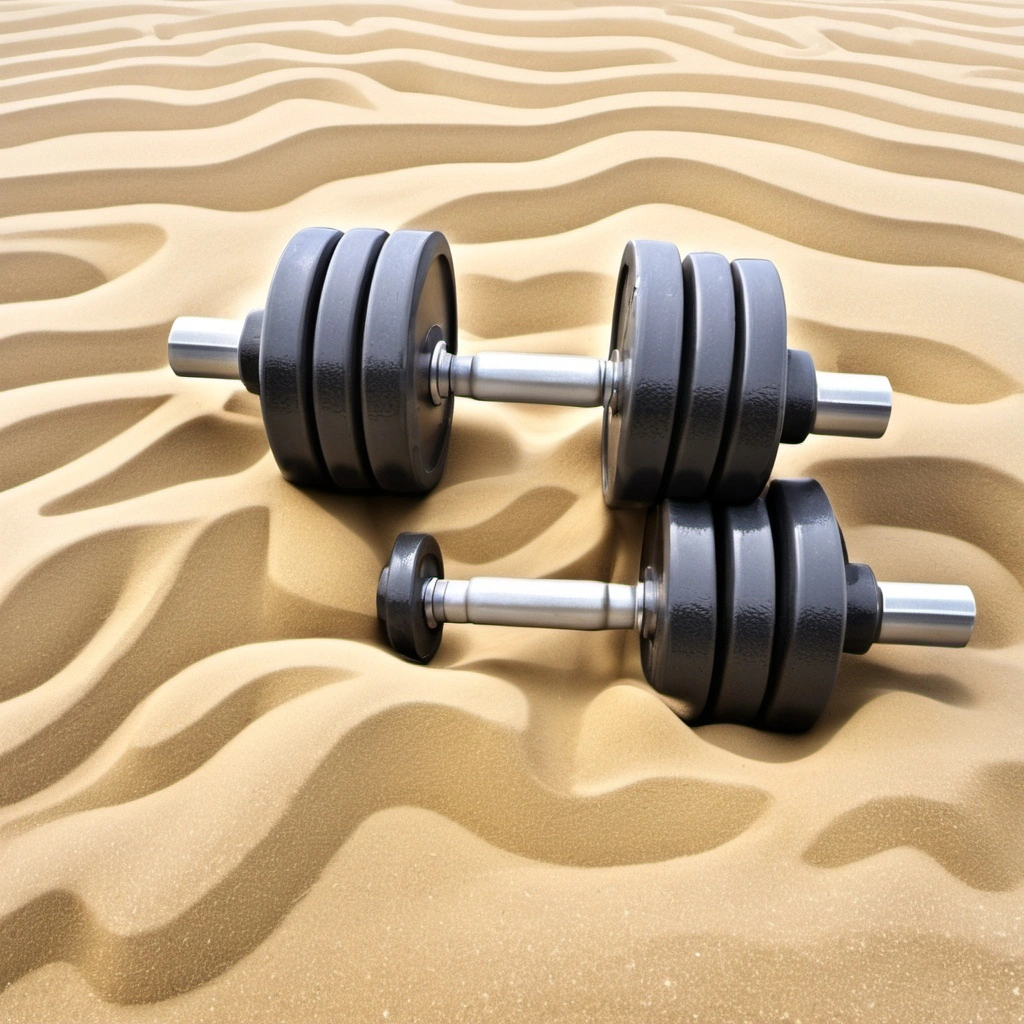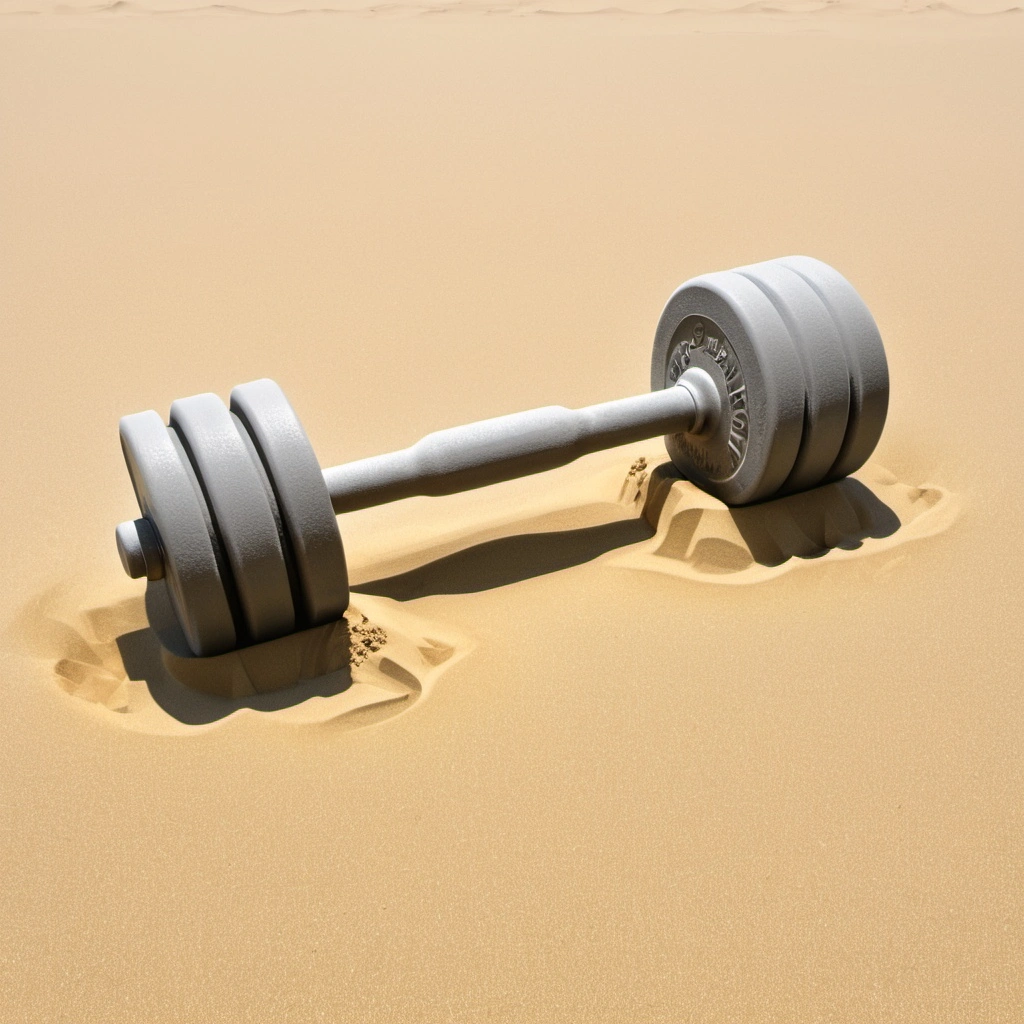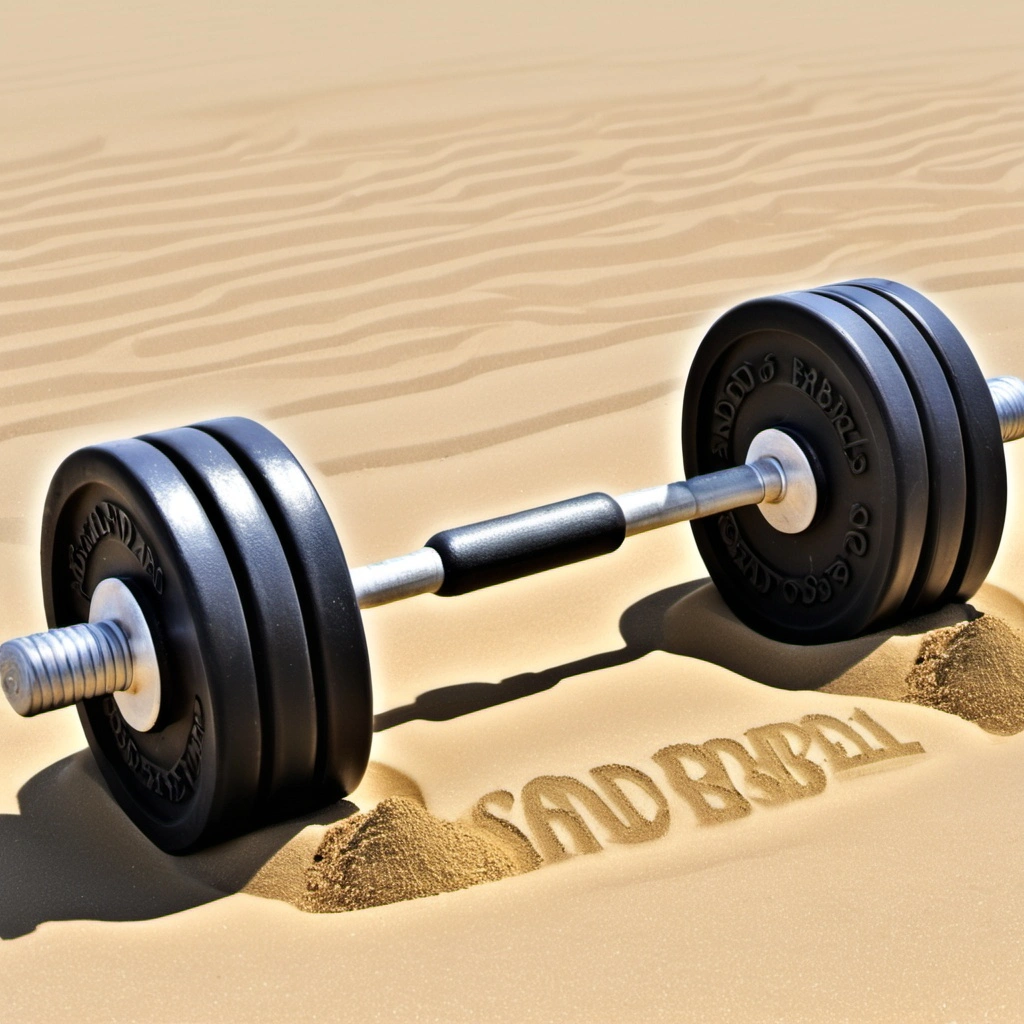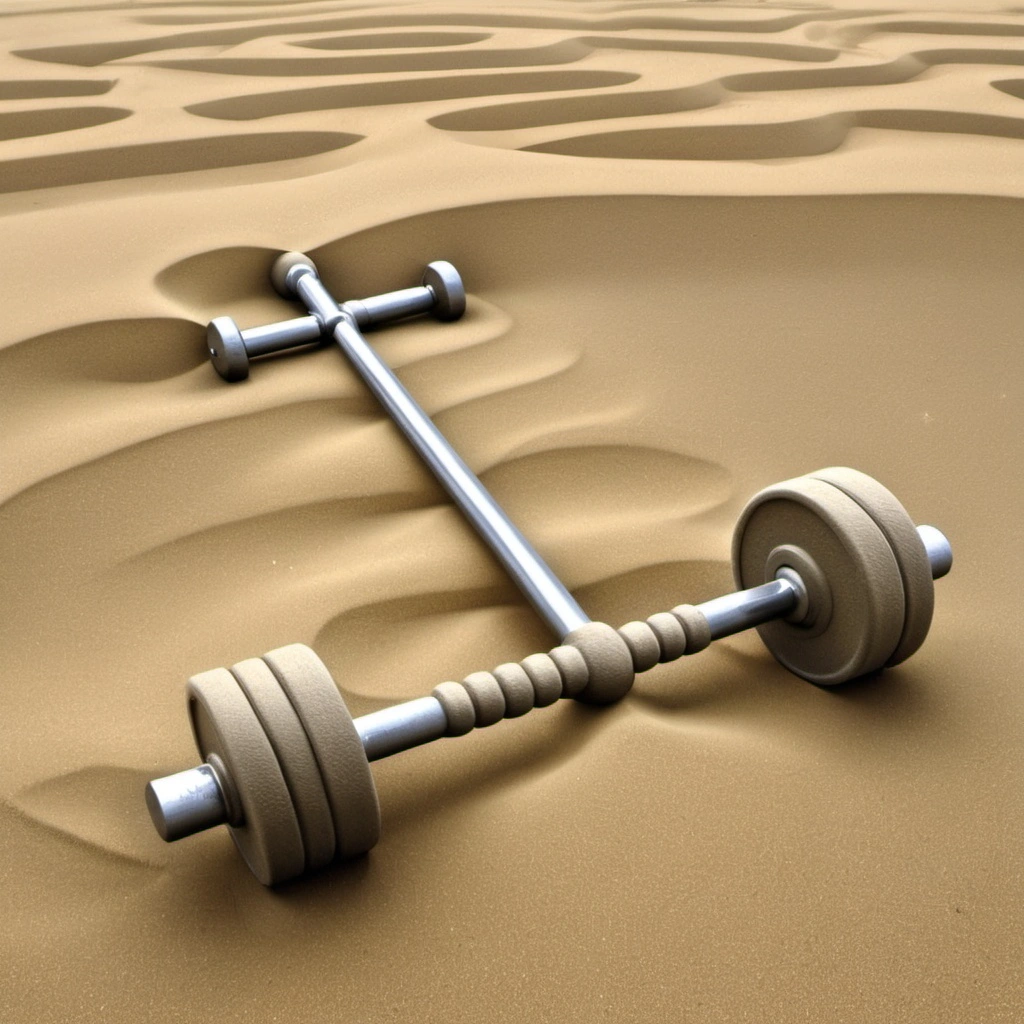Explanation of Sand Barbells
Sand barbells are fitness equipment designed for strength training exercises. Unlike traditional barbells, they are usually made of metal and filled with weights. Sand barbells have a flexible outer shell filled with sand. This design allows a more dynamic workout. The sand shifts in the barbell during exercises. This requires greater stabilization and engages more muscles.

Importance of Choosing the Right Sand Barbell
Choosing the right sand barbell is crucial. It helps you reach your fitness goals and stay safe during workouts. An made or low-quality sand barbell may not provide enough resistance or durability. This increases the risk of injury and slows progress. Also, different people have unique preferences and needs for weight, grip, and design. So, it’s essential to pick a sand barbell that suits your requirements.
Overview of the criteria for selection
When selecting a sand barbell, you should consider several factors.
- Weight range is key. The sand barbell should suit your current fitness level and goals. It should provide enough resistance to challenge you. But, it should not be too heavy or light.
- Look for a sand barbell with good construction quality. Use tough materials to make it. It should have strong stitching and a secure closure system. These features prevent sand leakage and ensure long-term reliability.
- Grip comfort is key. Look for ergonomic handles with a non-slip texture. They ensure a comfy and secure grip during exercises. This reduces the risk of hand fatigue and slippage.
- Choose a sand barbell with interchangeable weights or adjustable configurations. It lets you adapt to different exercises and fitness routines. This allows for more versatility and progression.
- Consider the portability and storage of the sand barbell. This is especially important if you plan to use it at home or while traveling. Look for compact designs. Or, look for options with carrying handles. They make transport and storage easy.
Durability
Sand barbells are fitness equipment designed for strength training. They use the resistance of weights filled with sand. The materials used to make the barbell affect its durability. This includes the outer covering, stitching, and straps. The materials must be high-quality. High-quality, tear-resistant materials such as reinforced nylon or vinyl are preferable.
- Strong stitching and well-sealed seams prevent sand leakage. They also ensure the barbell lasts a long time. Double stitching and reinforced seams are common features in durable sand barbells.
- Proper weight distribution in the barbell prevents uneven stress. Well-designed compartments or pockets hold the sand. They ensure that the weight is even. This reduces the risk of tearing or damage.
- Attach the handles and straps to the barbell. They should have strong stitching and tough materials. Comfortable, non-slip handles also contribute to the usability and durability of the equipment.
- Resistance to wear and tear is a factor in durability. It depends on the barbell’s ability to endure regular use. This includes dropping, tossing, and wear and tear. The barbell is tough. It stays strong over time thanks to abrasion-resistant materials and sturdy construction.
- You may use the barbell outdoors or expose it to moisture, UV rays, or other factors. For durability, it needs weather-resistant materials and coatings.
- Check the warranty from the manufacturer. Also, read customer reviews. They can tell you how long a sand barbell lasts.
Sand barbells are durable. They can withstand use and stress without damage. Let’s break down each aspect:
Definition of Durability in Sand Barbells
Durability in sand barbells encompasses several key elements
- Material strength is about the quality and toughness of the barbell’s materials. It includes the outer casing and internal parts like the bags holding the sand.
- The quality of the construction is about precision and robustness. It includes the stitching, seams, and closures. They add to the strength.
- The barbell must resist wear and tear. This means it must keep its function and appearance. It faces frequent use, handling, and exposure. These include moisture, sunlight, and abrasion.
Factors affecting durability
- We use high-quality, durable materials for the outer casing. They are heavy-duty nylon or reinforced polyester. The bags for containing the sand are puncture-resistant. Such materials contribute to longevity.
- Seam Strength: Double or triple stitching strengthens seams. It also reinforces stress points. This enhancement prevents tears or ruptures during use.
- Closure mechanisms are crucial. Zippers, Velcro, or buckles keep the sand in and stop leaks.
- Ergonomic design can impact durability. It does so by reducing stress points and spreading weight. This prevents strain on specific parts.
- Maintenance Requirements: Proper care and upkeep are key. They include cleaning, drying, and storing the barbells when not in use. These steps can extend their lifespan.
Evaluation of each sand barbell’s durability
When assessing the durability of sand barbells, it’s essential to consider
- Customers review the product. Their feedback on its longevity and robustness can provide valuable insights. It will show how durable it is.
- The manufacturer provides specifications. These cover the materials, construction, and quality control. They can show how long the product will last.
- Warranty coverage shows the length and terms of the warranty. It can say the manufacturer’s confidence in the product’s durability.
Versatility
Definition of versatility in sand barbells
Sand barbells are versatile. They can accommodate many exercises and routines because they are adaptable. Sand barbells use sand for weight. This allows dynamic movements and exercises. They target different muscles and fitness goals. This is unlike traditional barbells.
Types of exercises possible with sand barbells
- You can use sand barbells for strength training. They work for classic exercises like squats, deadlifts, lunges, and bench presses.
- Sand barbells are unstable. They are great for core exercises like Russian twists, plank rows, and wood chops.
- Sand barbells can mimic real-life movements. They are good for functional exercises like overhead presses, farmer’s walks, and rotations.
- Rehabilitation exercises often use sand barbells. Their soft and malleable nature makes them ideal for rehabilitating injuries. They work through controlled movements and lighter resistance.
- You can add sand barbells to your HIIT routines for cardio workouts. They add resistance to exercises like burpees, squat jumps, and overhead slams. This makes for an intense workout.
Assessment of each sand barbell’s versatility
The versatility of a sand barbell can vary depending on its design, size, and weight capacity. These factors include the quality of materials. They also include the durability of the outer shell and how easy it is to adjust the weight. They can also affect its versatility. Here are some criteria to consider when assessing the versatility of a sand barbell

- A versatile sand barbell should offer a wide range of weight options. These options should fit various fitness levels and exercise intensities.
- Handle design is key. The handle should be comfy to grip. It should allow for different hand positions. This helps with a variety of exercises.
- Durability is key. An outer shell must be tough to handle different exercises and places. This ensures long-term use.
- You can adjust the sand weight inside the barbell. This enables quick changes in resistance for different exercises and users.
- Stability is key. Sand weight shifts, but a balanced sand barbell should stay stable. This prevents injury and keeps proper form.
Price
Importance of price in the selection process
Price often matters a lot in choosing any product. This is true for sand barbells. Customers consider their budget. They weigh it against the product’s value. For some, affordability might be most important. Others might rank quality over price. They compare it to its price.
Range of prices for sand barbells
The price range for sand barbells can vary a lot. It depends on factors such as brand, quality, weight capacity, materials, and features. Usually, you can find cheap sand barbell sets at the low end of the price range. They range from $20 to $50. But, better sets with higher weight limits, tough build, and comfy designs cost $50 to $200 or more. Adjustable sand barbells allow users to customize the weight. They may be pricier due to their versatility and convenience.
Value for money analysis of each sand barbell
When valuing a sand barbell, it’s essential to consider factors beyond price. Here are some key aspects to assess:
- Quality: Test the materials used, construction, and durability of the sand barbell. A better barbell may cost more. But, it may last longer and work better.
- Weight Capacity: Consider if the sand barbell can handle your strength needs. This includes both your current needs and any future ones. A barbell with a higher weight capacity may be a better value. It allows for progression as you become stronger.
- More Features: Assess any extra features. These may include ergonomic handles, secure locks, or adjustable weights. These features can make the barbell easier to use and more convenient. They might justify a higher price.
- Brand Reputation and Warranty: Research the brand that makes the sand barbell. Also, look into its warranty. A trusted brand has a good warranty. It can bring peace of mind and assure quality. This may justify a higher price.
- User Reviews: Look for them. They should be on the specific sand barbell you’re considering. Real-world experiences can offer valuable insights. They are into the product’s performance, reliability, and value for money.
Customer Reviews
Importance of customer feedback
Customer feedback is crucial for any business. This is especially true in the fitness industry. Manufacturers create products like sand barbells to meet specific needs and preferences. Reviews provide valuable insights. They show how well a product performs and its durability, comfort, and satisfaction. Understanding customer feedback helps companies. It lets them improve their products. They can also address issues and serve their target audience better. It also builds trust with potential customers. They can make better buying decisions based on real user experiences.
Summary of customer reviews for each sand barbell
- Product A
- Many users praise Product A’s ergonomic design and comfy grip. They like its versatility for squats, lunges, and curls.
- Negative reviews mention issues with the outer casing’s durability. Customers report tears or leaks after prolonged use. A few users also note that the weight distribution feels uneven at times.
- Product B
- Users give positive reviews. They praise the durability of Product B. It holds up well, even during intense workouts. Many appreciate its compact size and ease of storage.
- Negative reviews say the grip texture is too abrasive. It causes discomfort when using it. A few mention difficulties with the weight distribution. This is especially so when adding or removing sand.
- Product C
- Customers rave about Product C’s sleek design and smooth handling. Many highlight its adjustable weight. It allows for custom workouts.
- Some users have negative reviews. They worry about the lock. They say it can be finicky and prone to slipping during exercises. A few also report issues with sand leakage. The barbell tilts or someone turns it upside down.
Common themes or concerns mentioned in reviews
- Durability is a concern. Several reviews mention tears in the casing and sand leakage.
- Grip texture and ergonomics are big themes in customer feedback. Some users find them uncomfortable due to rough surfaces or uneven weight.
- Users like how sand barbells have adjustable weight. But, they report issues with the lock and changing the weight.
- Design: Many customers praise the look of the sand barbells. But, others dislike some design aspects. These include grip texture and weight distribution.
Special Features
Unique selling points of each sand barbell
- Sand barbells often have adjustable weight. Users can customize the load to their strength and workout preferences.
- Sand barbells are versatile. You can use them for many exercises. You can use them for normal weightlifting exercises like squats, deadlifts, and presses. You can also use them for functional training. For example, for rotational exercises and stability.
- They are compact and portable. This is one of the main advantages of sand barbells. They are usually more compact and lighter than traditional barbells. This makes them ideal for home gyms, outdoor workouts, or travel.
- Safety and durability are key. Tough materials make high-quality sand barbells. They can withstand intense workouts and provide safe lifting. Features like reinforced stitching and sturdy handles contribute to their longevity and safety.
Comparison of special features across different models
- Some sand barbells offer a wider range of adjustable weights. This allows for more flexible training progression.
- The handles vary between models. Some have ergonomic grips for comfort. Others focus on durability and grip.
- Some sand barbell models may come with extra attachments. These can include resistance bands or grip handles. These additions enhance the barbells’ versatility and allow for more exercises.
- Manufacturers make sand barbells from durable, high-quality materials. But, the specific material may vary between models. This difference affects factors such as weight distribution and feel.
Impact of special features on performance
- The barbell’s weight is adjustable. This lets users make it heavier over time. That is key for building strength and muscle.
- Sand barbells are versatile. They enable users to target many muscle groups and do a wide range of exercises. This helps with fitness and athleticism.
- The barbells are compact and portable. This makes them easy to use for workouts in many places. It helps people stick to their fitness goals.
- Safety and durability are key. They make a tool reliable and long-lasting. They cut the risk of injury and give peace of mind during workouts.
Conclusion
Recap of the top 7 sand barbells
- Summarize the key features, pros, and cons of each of the top 7 sand barbells. You’ve evaluated them in your research. This will help readers recall the options you presented and their respective qualities.
Final recommendation based on the outlined criteria
- Consider price, quality, and durability. Also, consider customer reviews and your other criteria. Then, make a final recommendation. Highlight which sand barbell you believe offers the best value and performance.
Suggestions for further research or considerations before buy
- Give guidance on more research or thoughts. Readers may want to do these before deciding to buy. This could include trying the equipment in person. Read more reviews. Seek expert opinions. Consider features that are important but weren’t in your analysis.


